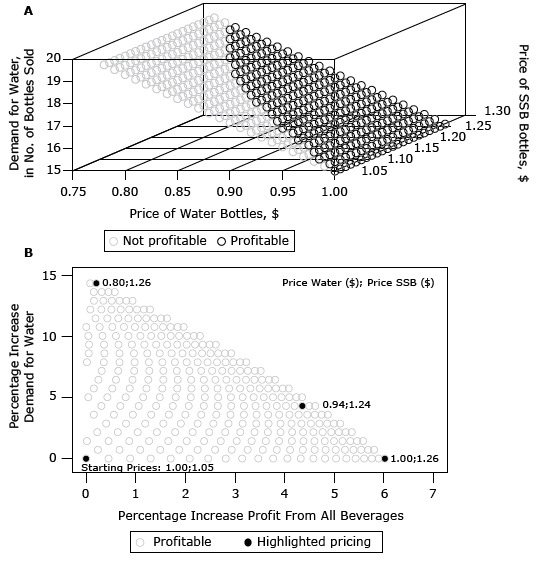Figure 1.

Water demand and profit for coordinated price changes for selling bottles of sugar-sweetened beverages (SSBs) for corner store A, Baltimore, Maryland, 2014. Panel A shows absolute demand of water over prices of water and bottles of SSBs. Panel B shows only profitable price combinations for percentage change of water demand in relation to profit change.
